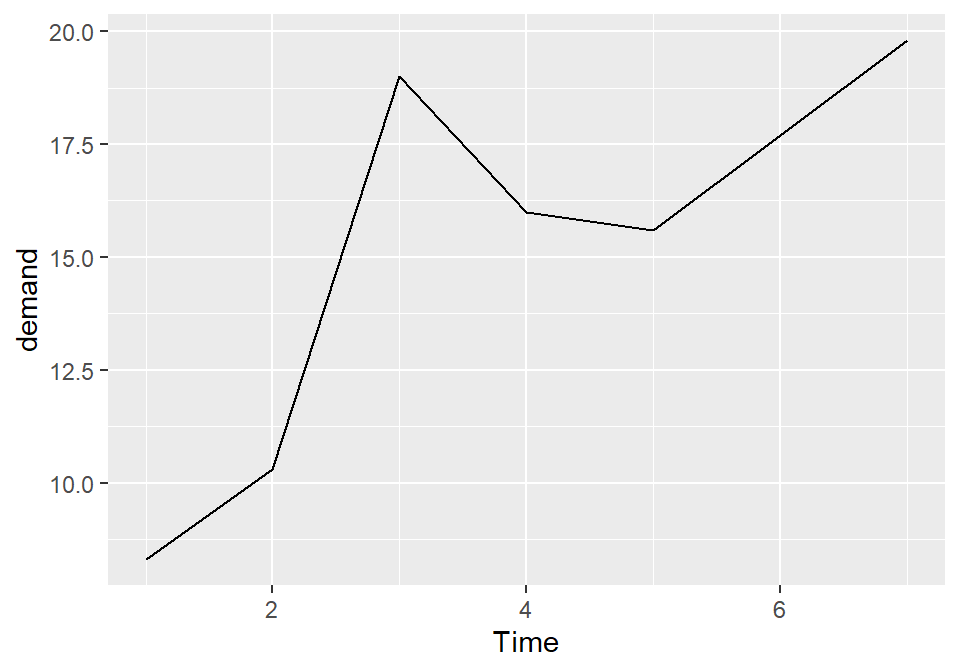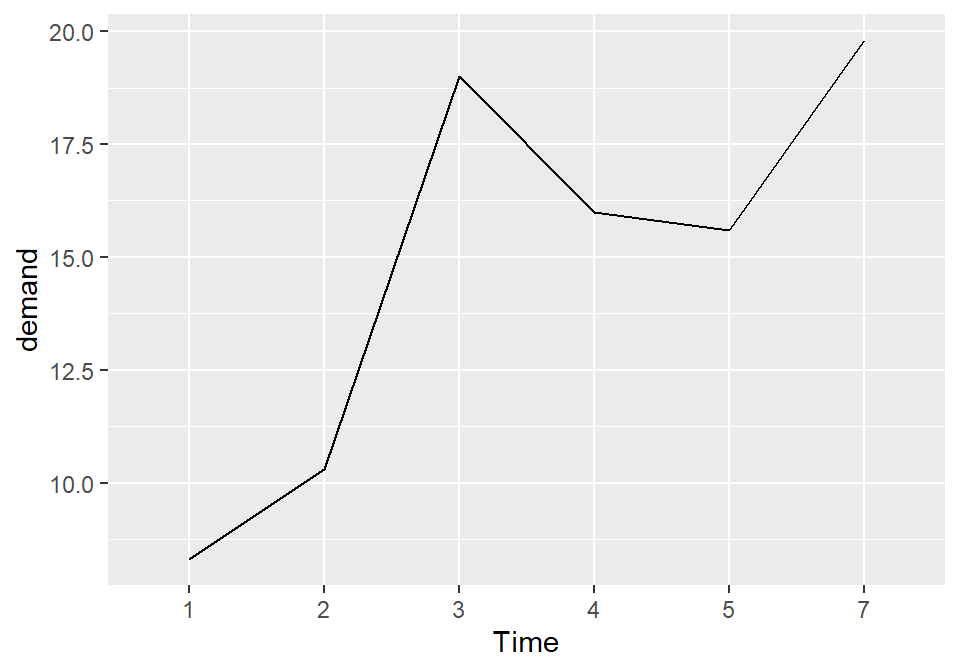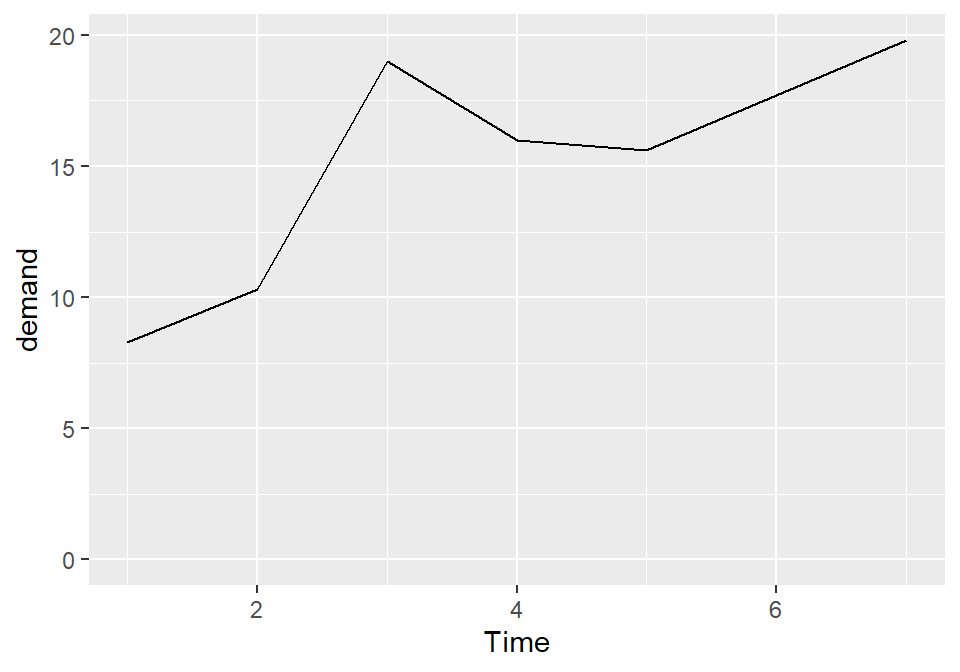4.1 Making a Basic Line Graph
4.1.2 Solution
Use ggplot() with geom_line(), and specify which variables you mapped to x and y (Figure 4.1):
ggplot(BOD, aes(x = Time, y = demand)) +
geom_line()
#> This is an untitled chart with no subtitle or caption.
#> It has x-axis 'Time' with labels 2, 4 and 6.
#> It has y-axis 'demand' with labels 10.0, 12.5, 15.0, 17.5 and 20.0.
#> The chart is a set of 1 line.
#> Line 1 connects 6 points, at (1, 8.3), (2, 10.3), (3, 19), (4, 16), (5, 15.6) and (7, 19.8).
Figure 4.1: Basic line graph
4.1.3 Discussion
In this sample data set, the x variable, Time, is in one column and the y variable, demand, is in another:
BOD
#> Time demand
#> 1 1 8.3
#> 2 2 10.3
#> 3 3 19.0
#> 4 4 16.0
#> 5 5 15.6
#> 6 7 19.8Line graphs can be made with discrete (categorical) or continuous (numeric) variables on the x-axis. In the example here, the variable demand is numeric, but it could be treated as a categorical variable by converting it to a factor with factor() (Figure 4.2). When the x variable is a factor, you must also use aes(group=1) to ensure that ggplot knows that the data points belong together and should be connected with a line (see Recipe 4.3 for an explanation of why group is needed with factors):
BOD1 <- BOD # Make a copy of the data
BOD1$Time <- factor(BOD1$Time)
ggplot(BOD1, aes(x = Time, y = demand, group = 1)) +
geom_line()
#> This is an untitled chart with no subtitle or caption.
#> It has x-axis 'Time' with labels 1, 2, 3, 4, 5 and 7.
#> It has y-axis 'demand' with labels 10.0, 12.5, 15.0, 17.5 and 20.0.
#> The chart is a set of 1 line.
#> Line 1 connects 6 points, at (1, 8.3), (2, 10.3), (3, 19), (4, 16), (5, 15.6) and (7, 19.8).
Figure 4.2: Basic line graph with a factor on the x-axis (notice that no space is allocated on the x-axis for 6)
In the BOD data set there is no entry for Time = 6, so there is no level 6 when Time is converted to a factor. Factors hold categorical values, and in that context, 6 is just another value. It happens to not be in the data set, so there’s no space for it on the x-axis.
With ggplot2, the default y range of a line graph is just enough to include the y values in the data. For some kinds of data, it’s better to have the y range start from zero. You can use ylim() to set the range, or you can use expand_limits() to expand the range to include a value. This will set the range from zero to the maximum value of the demand column in BOD (Figure 4.3):
# These have the same result
ggplot(BOD, aes(x = Time, y = demand)) +
geom_line() +
ylim(0, max(BOD$demand))
ggplot(BOD, aes(x = Time, y = demand)) +
geom_line() +
expand_limits(y = 0)#> This is an untitled chart with no subtitle or caption.
#> It has x-axis 'Time' with labels 2, 4 and 6.
#> It has y-axis 'demand' with labels 0, 5, 10, 15 and 20.
#> It has 2 layers.
#> Layer 1 is a set of 1 line.
#> Line 1 connects 6 points, at (1, 8.3), (2, 10.3), (3, 19), (4, 16), (5, 15.6) and (7, 19.8).
#> Layer 2 is a blank graph that VI can not process.
Figure 4.3: Line graph with manually set y range
4.1.4 See Also
See Recipe ?? for more on controlling the range of the axes.